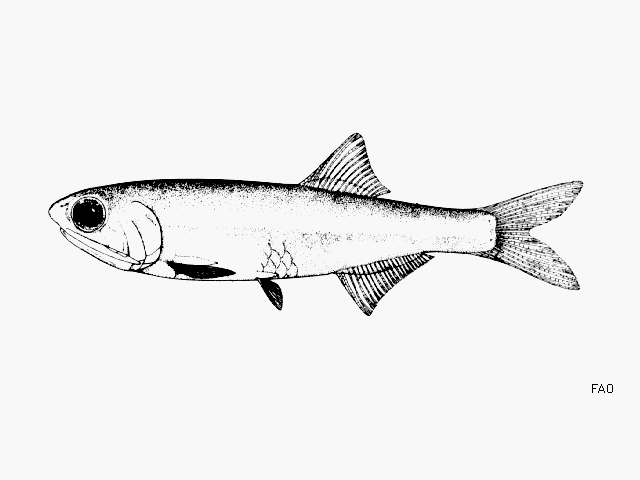| Engraulidae (Anchovies), subfamily: Engraulinae |
| 9.1 cm TL (male/unsexed) |
|
pelagic-neritic; freshwater; brackish; marine; depth range 0 - 50 m |
| Western Central Atlantic: Cuba and Jamaica to at least Puerto Rico, if not throughout Lesser Antilles; Yucatan (Mexico) to Colombia, Venezuela and Trinidad, but apparently not further south. |
|
Dorsal spines (total): 0-0; Anal spines: 0-0; Anal soft rays: 17-22. Snout moderate, a little over 1/2 eye diameter; maxilla moderate, tip sharply pointed, reaching to or a little beyond hind border of pre-operculum; gill cover canals of walkeri-type. Anal fin fairly short, its origin before midpoint of dorsal fin base. Anus nearer to pelvic fin tips than to anal fin origin. A narrow silver stripe along flank about eye diameter (Ref. 189). |
| A schooling species occurring in coastal waters. Enters saline lagoons, and, if identified properly, then also in freshwater (e.g. the middle and upper flights of the Gatun Locks, Canal Zone). Feeds on plankton (Ref. 5217). |
|
Least Concern (LC); Date assessed: 24 August 2012 Ref. (130435)
|
| harmless |
Source and more info: www.fishbase.org. For personal, classroom, and other internal use only. Not for publication.
